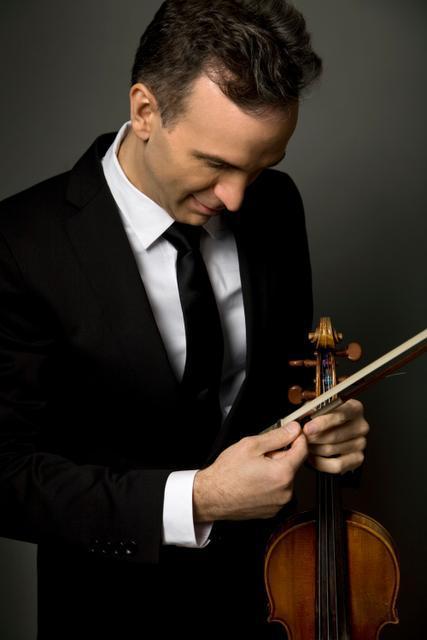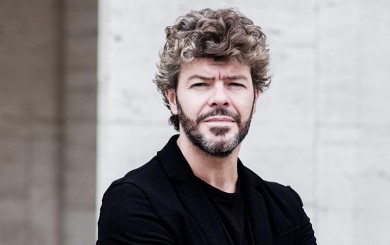Shaham brings bite and beauty to Bartók with New World Symphony

Gil Shaham performed Bartók’s Violin Concerto No. 2 with the New World Symphony at the Arsht Center Saturday night.
A gentleman, Oscar Wilde once said, is a man who only gives offense on purpose.
By a similar standard, a violin virtuoso on the order of Gil Shaham only plays a harsh note when he intends to.
Through most of his performance of the Bartók Violin Concerto No. 2 with the New World Symphony at the Arsht Center in Miami Saturday, Shaham played with the clean style and preternatural bow control for which he is known. But he knew when to bring a touch of Hungarian mountain fiddler to his playing, when he dug in to produce a grinding buzz when the concerto’s rapid passagework reached the violin’s lowest string.
With guest conductor Pablo Heras-Casado on the podium, Shaham gave a performance of the 1938 concerto that expressed all of its breadth, from its Romantic melodies to its modernistic rhythms and sizzling virtuosity. He played with a singing tone in the rhapsodic passages in the opening Allegro on the highest string–music that could have been heard in a 19th century concert hall, if the harmonies were toned down a bit. He brought a pensive lyricism to the movement’s warm dialogue with oboe and harp. He powered through the runs and chords of one of the most difficult concertos in the repertory with astonishing speed and accuracy, while giving these passages an electric energy.
In the Andante, violinist and orchestra came together for several minutes of music of quiet power, as the wind section wrapped Shaham’s melodies in glowing, unearthly,harmonies. In the concluding Rondo, Shaham sawed through rapid passages with more effective roughness, and took on the brass section convincingly with rapid ascending chords that range through the hall.
As an encore, he gave a stately, resonant account of the Gavotte and Rondo from Bach’s E Major Partita.
The concert opened with Liszt’s Les Préludes, here given a performance full of verve and excitement. Among the most brilliant passages is the appearance of the heroic main theme in the brass, as the violins weave a complex, almost frantic web of notes, around it. If the brass obliterated the strings at points in this performance, the accuracy and bright sheen of the violins still made for a highly effective performance. Heras-Casado skillfully built to climactic moments, drawing out the ominous tone of the opening and husbanding the power of the orchestra for maximum force in the theme’s final appearance.
The concert ended with Brahms’ Symphony No. 3. From a grand and majestic opening, Heras-Casado led a sweeping, rhythmically sturdy performance of the opening Allegro, but one with the sensitivity, nuance and sense of structure to make it much more than just a sequence of big moments. This was a dynamic, forward-leaning performance, as Heras-Casado gestured for more and more intensity from cellos and violins in their tense ascending figures.
The Andante came off as unusually solemn. In an unhurried performance, Heras-Casado allowed the music to breathe, with the wind section playing in rich, well-balanced tones and a hushed gravity. In the movement’s final section, when violins come in high on the top string, the movement’s quiet passion crested, without any loss of the emotional restraint.
For many of those who love Brahms’ music, the discovery of the third movement is a watershed in their appreciation for this composer. Heras-Casado didn’t milk the stirring opening theme as some conductors do. He allowed the richness of the orchestration, the tonal luster produced by the New World musicians and a touch of emphasis on the dissonant melodic climax, to carry the theme, and this worked. As it moved from oboe, to horn to other instruments, this warm but restrained style allowed the power of Brahms’ music to come through.
The concluding Allegro came off with edge-of-the-seat excitement. The clipped, craggy rhythms, the tension between darkness and light that lasted almost to the end, and the surprisingly quiet conclusion – all were brought off with a transparency, accuracy and sensitivity to the larger whole.
Posted in Performances
Leave a Comment
Sun Feb 25, 2018
at 10:52 am
No Comments
